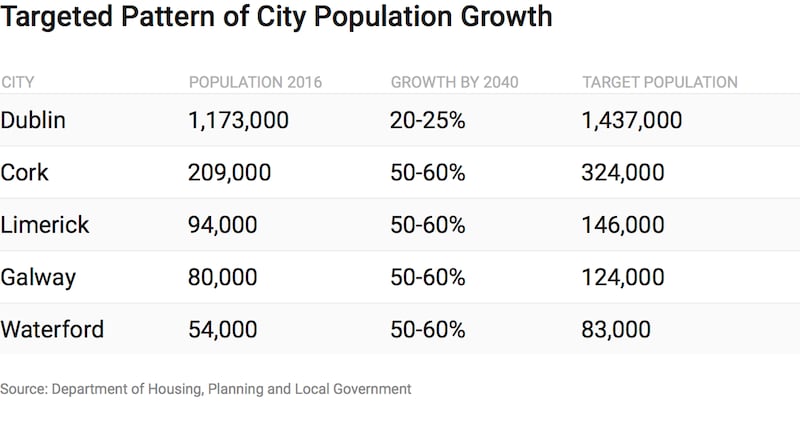Taoiseach Leo Varadkar has suggested the Metro North project is likely to be extended beyond the northside of Dublin.
The Irish Times understands the metro, expected to be a centrepiece of the plan the Government is announcing today to shape Ireland’s development over the next 20 years, will stretch deep into the southern suburbs, linking with Dart and Luas lines.
“I think it’s fair to say that from tomorrow we won’t call it Metro North any more – just Dublin metro,” Mr Varadkar said.

The Cabinet will today formally sign off on the strategy to map Ireland’s development to 2040, and an accompanying 10-year €116 billion capital plan to fund infrastructural projects.
Both documents will be themed as “Project Ireland 2040”, which will outline significant spending in transport, health, education and measures to tackle climate change, as well as outlining where future population growth should be.
Speaking last night at the Dublin Chamber of Commerce annual dinner, Mr Varadkar gave a preview of some aspects of today’s plan.
Investments
He also predicted significant investments in bus transport, cultural and education projects and health, with plans to move the Coombe, Rotunda and Limerick maternity hospitals to new premises.
The projects will include the M20 motorway linking Cork and Limerick, the extension of electrified train lines to Drogheda and Maynooth and a €7 billion investment in rural roads.
One of the main goals of the overarching strategy will be to drive growth in urban centres around the country to deal with projected future population growth of a million people by 2040.
Almost half of all houses must be constructed in cities, towns and villages under the plan.
“The target is for 40 per cent of all new housing to be delivered within the existing built-up areas of cities, towns and villages on infill and/or brownfield sites,” the planning framework document states.
So-called brownfield sites are those which were previously used for industrial or commercial purposes.
It is understood, however, that this target will increase to 50 per cent in Dublin county and even further for the areas of the capital either within or close to the M50 motorway around the city centre.
By 2040, an extra 250,000 will live in this area than is currently the case. A further 250,00 are envisaged to live in second-tier cities such as Cork, Galway, Limerick and Waterford, with the remainder outside all cities.
Of the total €116 billion in the plan, €91 billion will come directly from the exchequer, with the remainder funded by the commercial semi-State sector.
Higher education
The higher-education sector is expected to get €2.2 billion, with the planned technical university for the southeast expected to benefit. About a fifth of the entire plan – €22 billion – will go towards climate change and related measures.
There will also be a €1 billion rural regeneration fund, a €2 billion urban regeneration fund and a further €1 billion fund for culture.
The development of a number of new hospitals, the introduction of 2,600 additional beds and the establishment of new community nursing units to provide an extra 4,500 beds will also be announced.
Mr Varadkar said the new strategy will increase the density of housing in Dublin to avoid urban sprawl. He condemned criticisms of the plan as favouring urban over rural or east coast over west.
“That’s not leadership,” he said. “That’s the worst form of parochial politics, to breed resentment rather than encourage people to be ambitious about their town or their county,” he said.










